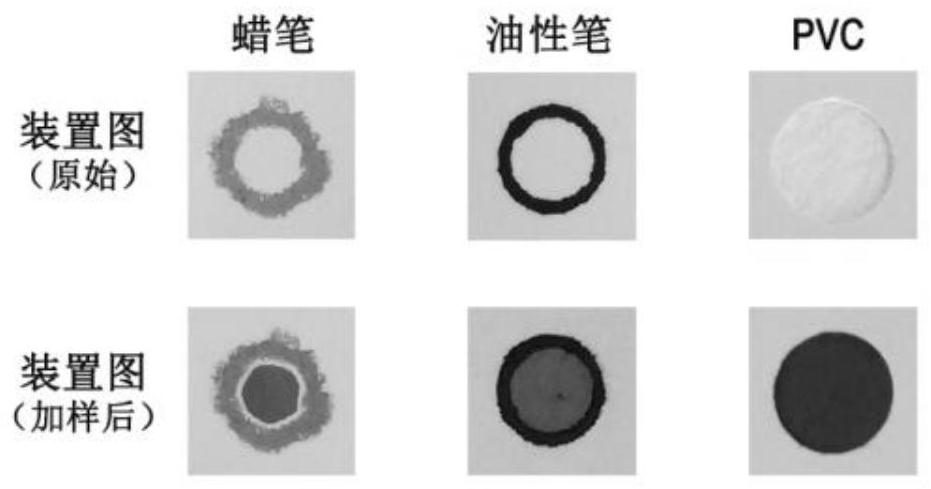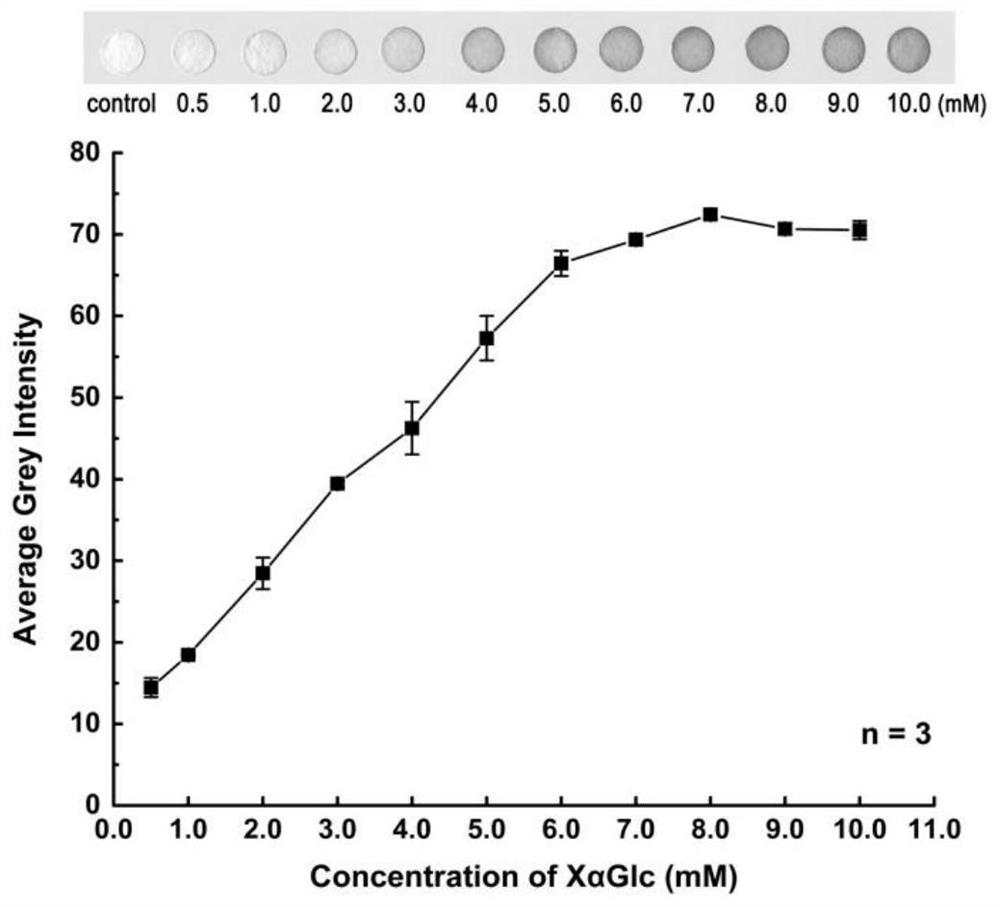Paper-based detection device for detecting cronobacter and application of paper-based detection device
A technology of Cronobacter and detection device, applied in the field of food safety, can solve the problem of less research on bacterial specificity detection, and achieve the effects of low cost, avoidance of cross-contamination, and high device precision
- Summary
- Abstract
- Description
- Claims
- Application Information
AI Technical Summary
Benefits of technology
Problems solved by technology
Method used
Image
Examples
Embodiment 1
[0041] Embodiment 1, the preparation method of paper-based detection device
[0042] (1) Selection of paper base treatment method
[0043] Using Whatman No.1 filter paper as the paper-based material, the reproducibility and precision of the paper-based detection devices under three different processing methods of crayons, markers and PVC rubber sheets were compared.
[0044] 1. Crayon treatment
[0045] Use a gray crayon to draw the peripheral pattern on the Whatman No.1 filter paper along the circular part. After the hand-painted pattern, heat treatment is performed to completely soak the filter paper to form a hydrophobic area. The heating conditions are: heating temperature 120° C., heating time 5 minutes. After drying, images of the device were scanned and analyzed.
[0046] 2. Marker
[0047] Use the oil-based pen (mark pen) commonly used in office to draw the pattern on the filter paper, and also copy along the drawn circular curve, then turn the filter paper to the ...
Embodiment 2
[0072] Embodiment 2, the method utilizing paper-based detection device to detect Cronobacter
[0073] (1) Method for detecting Cronobacter using a paper-based detection device
[0074] (1) Activation and cultivation of bacterial strains
[0075] Take Cronobacter sakazakii ATCC 29544 as the standard strain of the experiment, inoculate the bacteria in TSB medium according to the inoculum amount of 2%, cultivate it at 37°C and 200r / min for 12 hours, and then draw the three-section line on the TSA plate. After culturing at 37°C for 12-16 hours, a single colony grew out, and the single colony was picked and inoculated in TSB medium for secondary activation for subsequent experiments.
[0076] (2) Acquisition of specific enzymes of the genus Cronobacter
[0077] In order to obtain the specific enzyme of Cronobacter genus α-glucosidase, it is necessary to crush the bacterial cells. In order to avoid the inactivation of α-glucosidase during ultrasonic crushing, it is necessary to o...
PUM
 Login to View More
Login to View More Abstract
Description
Claims
Application Information
 Login to View More
Login to View More - R&D
- Intellectual Property
- Life Sciences
- Materials
- Tech Scout
- Unparalleled Data Quality
- Higher Quality Content
- 60% Fewer Hallucinations
Browse by: Latest US Patents, China's latest patents, Technical Efficacy Thesaurus, Application Domain, Technology Topic, Popular Technical Reports.
© 2025 PatSnap. All rights reserved.Legal|Privacy policy|Modern Slavery Act Transparency Statement|Sitemap|About US| Contact US: help@patsnap.com



